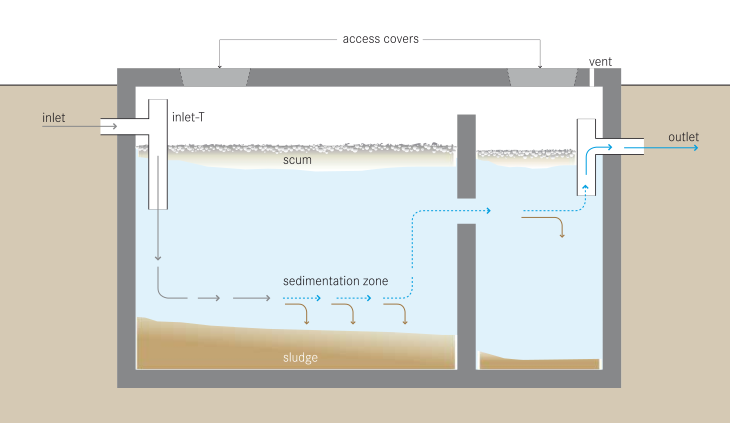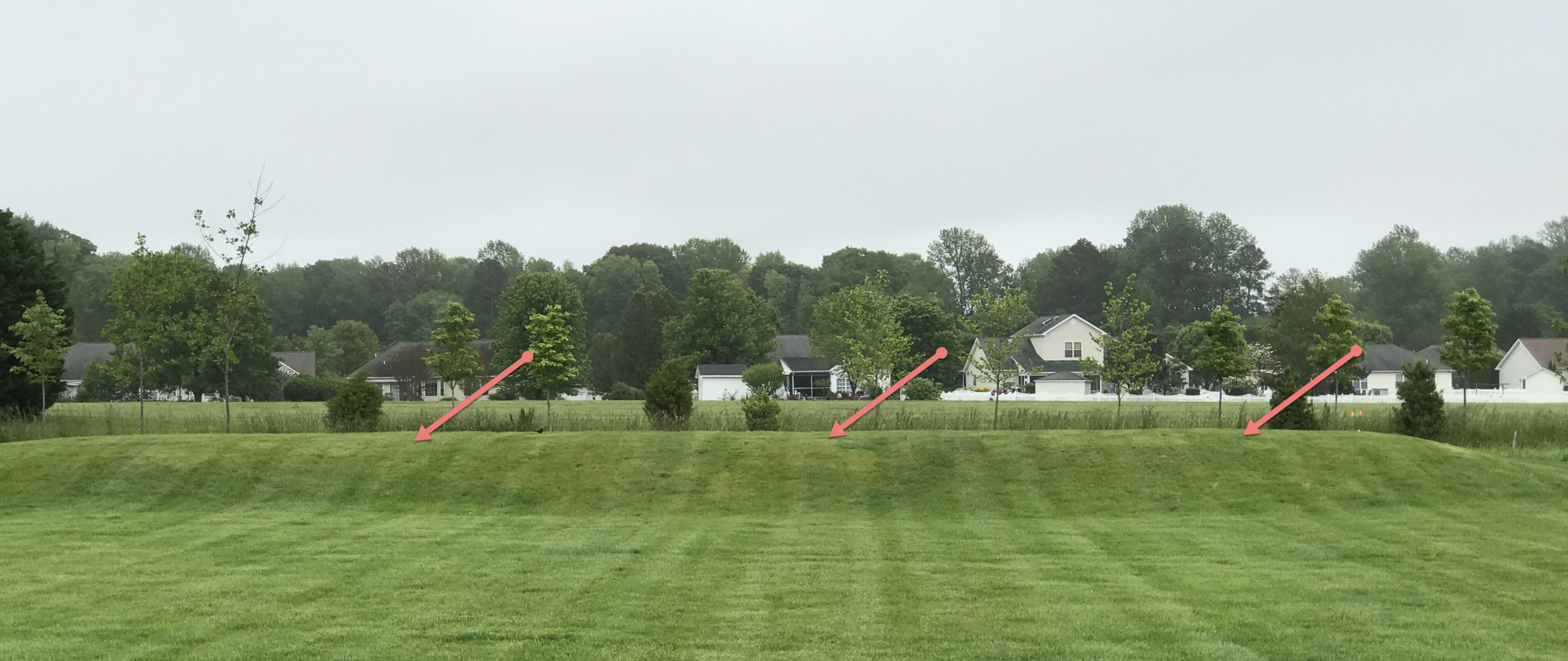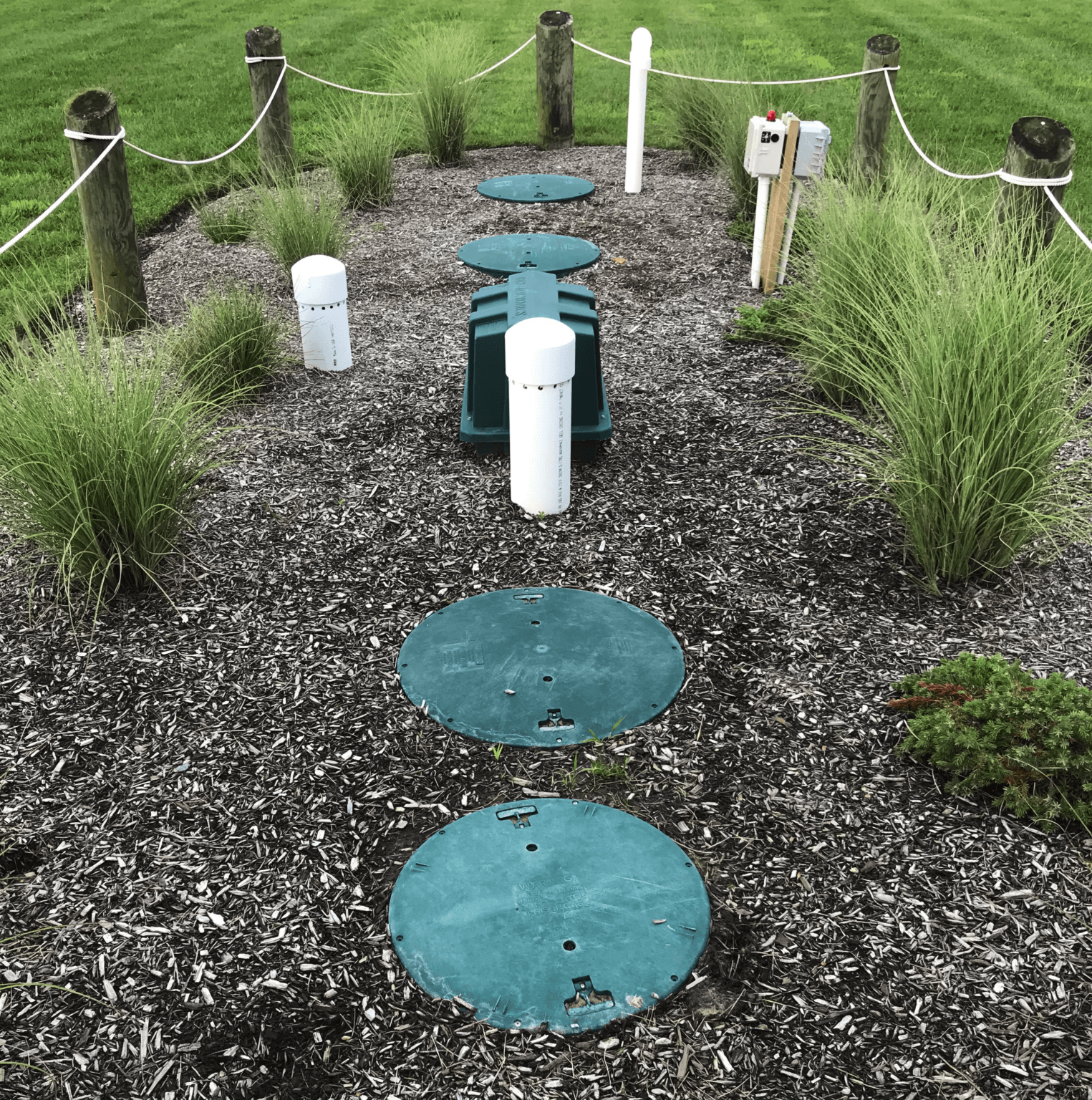Different septic systems exist, and most people don’t know that some systems work better in certain conditions. One of those is a mound septic system. Before you decide what kind of septic system you need, you must assess the type of soil you have in your property.
For anyone wanting to build a safe septic system, a mound septic system is a great option when traditional ones are not possible. If the location has specific soil conditions, such as a thin soil level and a high level of groundwater, or a rocky soil, this system is the only option.
If you are a frequent reader of this blog, you may know that my wife and I recently built a new house in Lewes. We both were happily surprised when we saw that we had a little mountain in the yard. How cute, we thought. Our own little natural mountain. That’s what we thought when we saw it anyhow.
It turned out that it wasn’t natural at all. It is part of our septic system. This is all new to me; I am used to city sewage systems. Oh well! We still like it.
We asked our builder why not all the houses in our community have one. He said that some house lots are not adequate for a conventional septic system. Our house was one of them.
I wanted to understand more. So, I researched the topic to know what mound septic systems are and what maintenance they require. This is what I have learned. I hope this is useful to you as well.
What is a Mound Septic System and How it Works
A mound septic system is a specially constructed drain fill for purifying wastewater. It is usually installed in places where other system designs are impossible to build.
A mound is part of the structure responsible for treating the wastewater. When wastewater enters a mound, it drains freely through multiple layers of sand and soil, which act as natural purifiers. Bacteria living in soil, together with the bacteria present in the wastewater, further decompose waste material.
This system was designed to overcome problems when constructing conventional systems in places that do not have certain soil qualities. By building the above-ground septic system, all the water purification requirements can be met.
An essential feature of this system is that wastewater comes slowly into the mound, which contains specific sand fill material with distinct requirements. It has to include a maximum of 20% grains larger than 2 millimeters and a maximum of 5% grains smaller than 0,05 millimeters. There are strict rules about grain size distribution to ensure high purification abilities.
If appropriately designed, these systems can be used for houses, vacation homes, and even business properties. Before constructing it, soil testing must be done to determine the natural flow rate and to calculate the size of the mound. Some areas, like those prone to floods or the ones in the proximity of waters, shouldn’t be considered for mound septic system construction.
According to the State of Michigan, Department of Environmental Quality, based on an analysis completed for the state of Wisconsin, the ability of these systems to effectively purify the water is very high, greater than 95 percent.
===>These are 10 things that you should know about your septic system.
Mound Septic System Design
Most of mound septic systems consist of three main parts:
- Septic tank
- Pump and pump chamber
- Mound with the replacement area
The Septic tank is usually designed to have two chambers, made of concrete or polyethylene. It is located underground. Wastewaters from your house go into this tank, where solid materials are deposited on the bottom. They decompose under the influence of bacteria.
Above it, a liquid layer forms, together with oils on top. The liquid layer travels from one chamber to another, and it is called effluent. This material still contains bacteria and other potentially dangerous substances, and it flows into the pump chamber due to gravity.

The pump chamber is constructed from the same materials and positioned in a way that gravity can do its job when it comes to septic tank flow. Three main parts in this chamber are a pump, pump control float, and high water level alarm float.
Control float turns the pump on when there is a specific quantity of effluent in the chamber. Instead of that, a timer can also be used. Alarm float turns on when the effluent level is too high. The reason for that can be a pump malfunction.
The mound is a drain field located above ground, made from specific sand material. Inside of it, there is a gravel bed with a series of small pipes that equally distribute effluent. Going through the sand and soil, effluent gets purified before reaching the underground waters.
Mounds are required to have designated replacement areas in case the existing ones need repair. They have different layers, and their depth should correspond with the soil’s limiting level. They can be several feet high above the ground.
Below is an informative video about how an above ground septic system works.
Above Ground Septic System Video
Mound Septic System Maintenance
Mound systems require periodic maintenance. I am planning on hiring professionals to complete this maintenance. Depending on your qualifications and confidence level, you may be able to complete some of this maintenance yourself. Proper care of all three components includes specific steps, listed below.
TANK:
- Do regular yearly inspections.
- Pump the tank when necessary. The amount of solid residue should be kept on minimum levels. High levels of solids can damage the pump and clog the pipes.
- You shouldn’t flush harsh chemicals or dangerous substances into your septic system.
PUMP CHAMBER:
- Perform yearly inspection of the pump and the floats. Repair the parts, or replace them if necessary.
- Read the manufacturers instructions about pump maintenance and follow them.
- Clean the filters. That is great prevention of solids entering the system.
- If an electrical problem or any other issue is preventing your pump from operating, stop flushing, and use a minimum amount of water until you resolve the problem.
MOUND:
- When performing any kind of yard work, make sure the mound stays safe.
- Be mindful when using water, try not to overflow the system.
- Roof or yard drainage should be directed away from the mound.
- Inspect it regularly for and liquids or surfacing odors. That could be a sign of a problem.
As mentioned before, the alarm float is a vital part of your system. If it activates, you should check it and call a professional if necessary. However, it can be activated even if the system is not overflowing. It can happen because of faulty circuit breakers, electrical power problems, and control float issues. Inspect all the parts and keep your water usage minimal.
Advantages and Disadvantages
There are several advantages of having a mound septic system. Some of them are the following:
- Absence of traditional waste container.
- Great water table protection.
- Easy installation process.
- Great for properties lacking easy access, in remote areas.
Mound septic systems also have certain disadvantages:
- Mounds can look very bad and they require some landscaping in order to look acceptable.
- These systems require a certain yard space.
- There is a possibility of a bad smell if the waste can’t drain fast enough.
- Possible pump failures.
- Construction and serious repairs may be costly.
House Maintenance To-Do List
I like to identify repetitive tasks that need to be done to maintain our house. I add these items to the House Calendar so that I don’t forget to complete them. These are the items I have added:
- Inspect the mound septic system: Annually
Related Posts:



